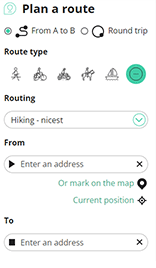Monument:
The last station of this itinerary goes out of Ciutat Vella, arriving at the Parc de la Ciutadella, where we find the impressive sculpture of a mammoth. This life-sized reproduction of the great extinct mammal was built up in armored concrete, in 1907, when this construction process was just being introduced in the city (the first building erected in Barcelona with this brand new technique was that of Grandes Almacenes Damians, in Pelai street, in 1915). The sculpture of the mammoth was modeled by the sculptor Miquel Dalmau and erected by the company "Construcciones Sistema Monier de cemento y hierro; Claudio Durán sociedad en comandita".
Natural history:
We started the itinerary with the first finding of evidence of a mammoth in Catalonia in 1883, and we now finish it nearly 25 years later next to a sculpture of this colossal animal that had lived in a remote past and, supposedly, disappeared with the Flood. The mammoth was 'ressurrected' amidst a XXth-century city in the form of a big sculpture, the first of a series of reproductions of the great extinct mammals that were to be built in the urban park and which finally were not executed.
The Parc de la Ciutadella was, since the last quarter of the XIX century, a place devoted to natural history. In 1882 the Museu Martorell was inaugurated, the first public museum in the city, devoted to natural history and archaeology and, in 1892, it was the zoological garden. These scientific institutions not only were dedicated to study and research but they had a great interest in the popularization of scientific knowledge as evidenced by the initiative of the great sculptures representing the life forms of the geologic times of Catalonia.
The idea to install life-sized sculptures in the Parc de la Ciutadella came from 1888, the same year of the Universal Exposition, as the result of the visit that Jaume Almera and Artur Bofill made to the gardens of the Crystal Palace in Sydenham, London, where they could contemplate the majestic reproductions of dinosaurs from the sculptor Benjamin Waterhouse Hawkins which were executed under the direction of the naturalist Richard Owen. However, it was not until the first years of the XXth century that this idea became a reality, thanks to the efforts of Norbert Font i Sagué and the municipal board of natural sciences, the Junta de Ciències Naturals de Barcelona, to which belonged Almera and Bofill.
The mammoth represented a species that had disappeared during the biblical flood. It offered an example in which science and religion were not necessarily incompatible. The priest and geologist Norbert Font i Sagué talked long on that issue in an attempt to conciliate the advancements of paleontology and the needs of the Catholic dogma. In 1909, he published El Diluvi bíblich segons la geologia in which he sustained that the Flood was not universal: it was one of many cataclysms Earth had suffered but the only one that humans could remember.
Links:
Font i Sagué, N. El Diluvi bíblich segons la geologia. Imprempta Casa de la Caritat. Barcelona, 1909.
Valls, L. El mamut de la Ciutadella (1907): biografia d'un objecte urbà. (pendent de publicació).


![]() | | Public
| | Public 

